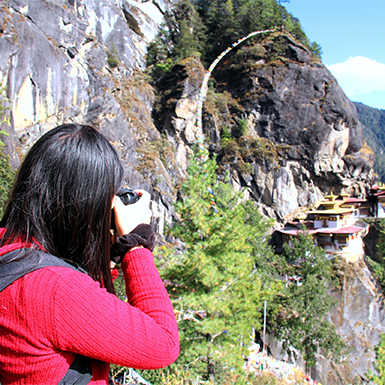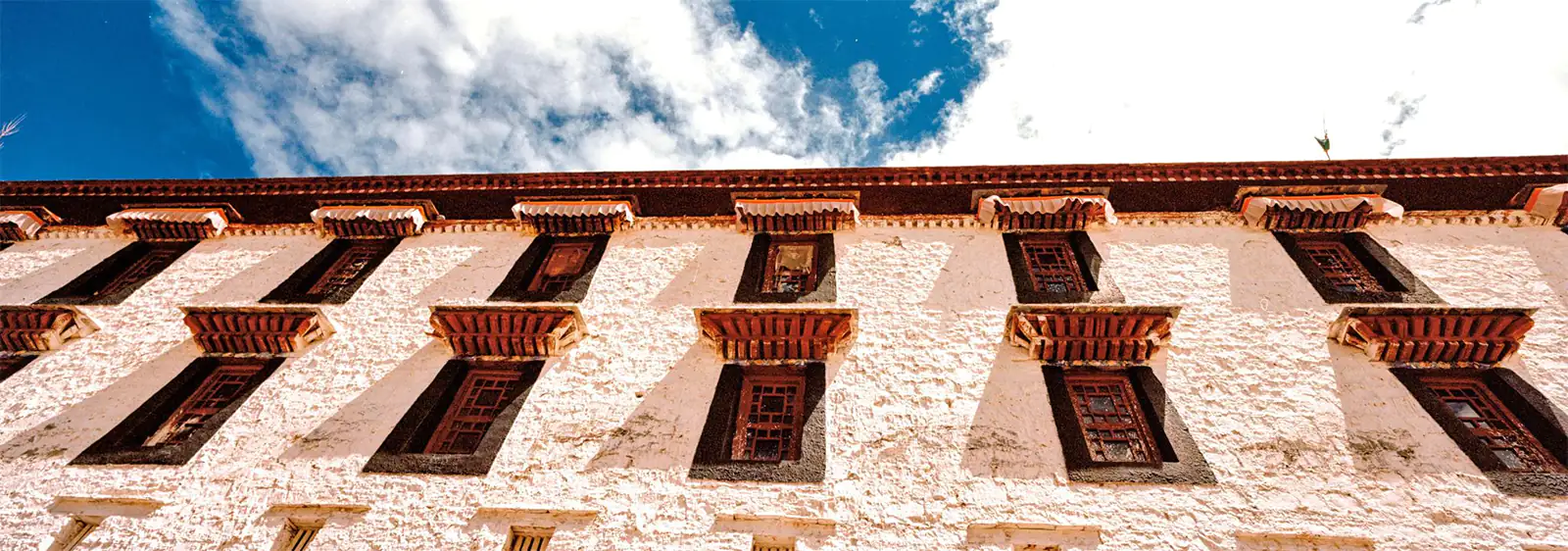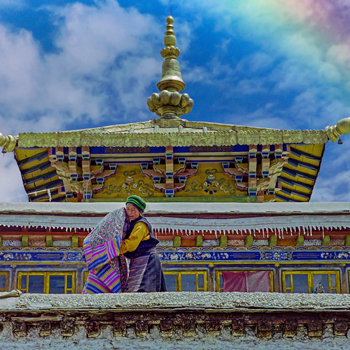Potala Palace – Former residence of Dalai Lamas
- Sunday January 29, 2023
- 0
Tibet is a remarkable country in North Asia with a rich history of customs and culture. The iconic Potala Palace, set on top of Moburi Hill, overlooking the majestic valley of Lhasa, is one of Tibet’s most captivating places to visit and explore. The Potala Palace provides excellent views of the high cliffs and nostalgic dwellings from its elevation of more than 3,500 meters.
The stunning panorama of the lowlands and Himalayas to the north will also be visible from here. Together with the eight stupas within, the Palace occupies around 700 square meters of Lhasa city. Potala Palace’s architecture displays the exquisite craftsmanship of medieval Tibetan artisans and features numerous chambers that can accommodate more than 500 people.
It’s compelling to observe how the enigmatic interior decor combines with the traditional exterior craftsmanship of the Tibetan artisans. The Potala Palace’s confluence of sculptures, devout chapels, and glittering pinnacles, as well as its comprehensive perspective, makes it one of the world’s most spectacular palaces, offering a magical ambiance for its visitors.
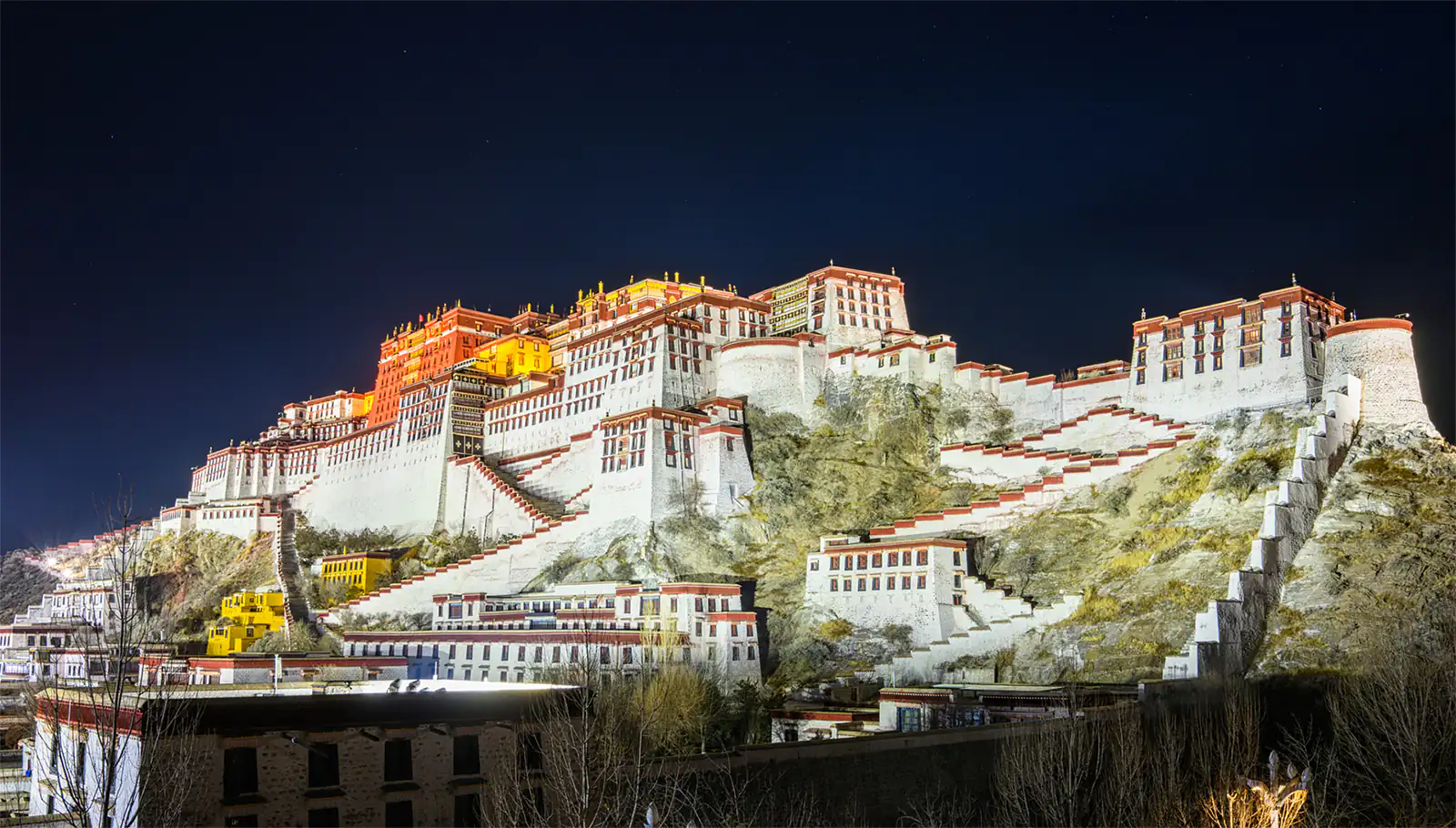
Historical Background of the Potala Palace
Potala Palace dates back to the 7th century and is home to several historical activities related to its construction. The 33rd Tibetan ruler, SongstenGampo, is acknowledged to have built the Potala Palace. It is believed that Songsten’sjoy for his marriage was a key driving force behind its creation as a gift to his wife. A significant conflict in the Lhasa region began in the ninth century, destroying this impressive architecture. The Palace’s reconstruction began in 1650 with the Dalai Lama‘s assistance. The Palace had brand-new, opulent constructions with stunning external and interior designs.
However, renovations took almost 45 years to complete. After the death of the 5th Dalai Lama in 1992, the 13th Dalai Lama added further renovations to the Palace. Following the Chinese invasion of Lhasa in 1959, the 14th Dalai Lama fled to India. Thankfully minor damage was done to The Potala Palace. It has now become a museum and has been available for public tours since the 1980s for visitors worldwide. Later, in 1994, the Potala Palace has designated a UNESCO World Heritage site. Furthermore, it is recognized as one of the World’s Modern Wonders. This Palace holds various events and religious festivals and serves as a home for several monasteries.
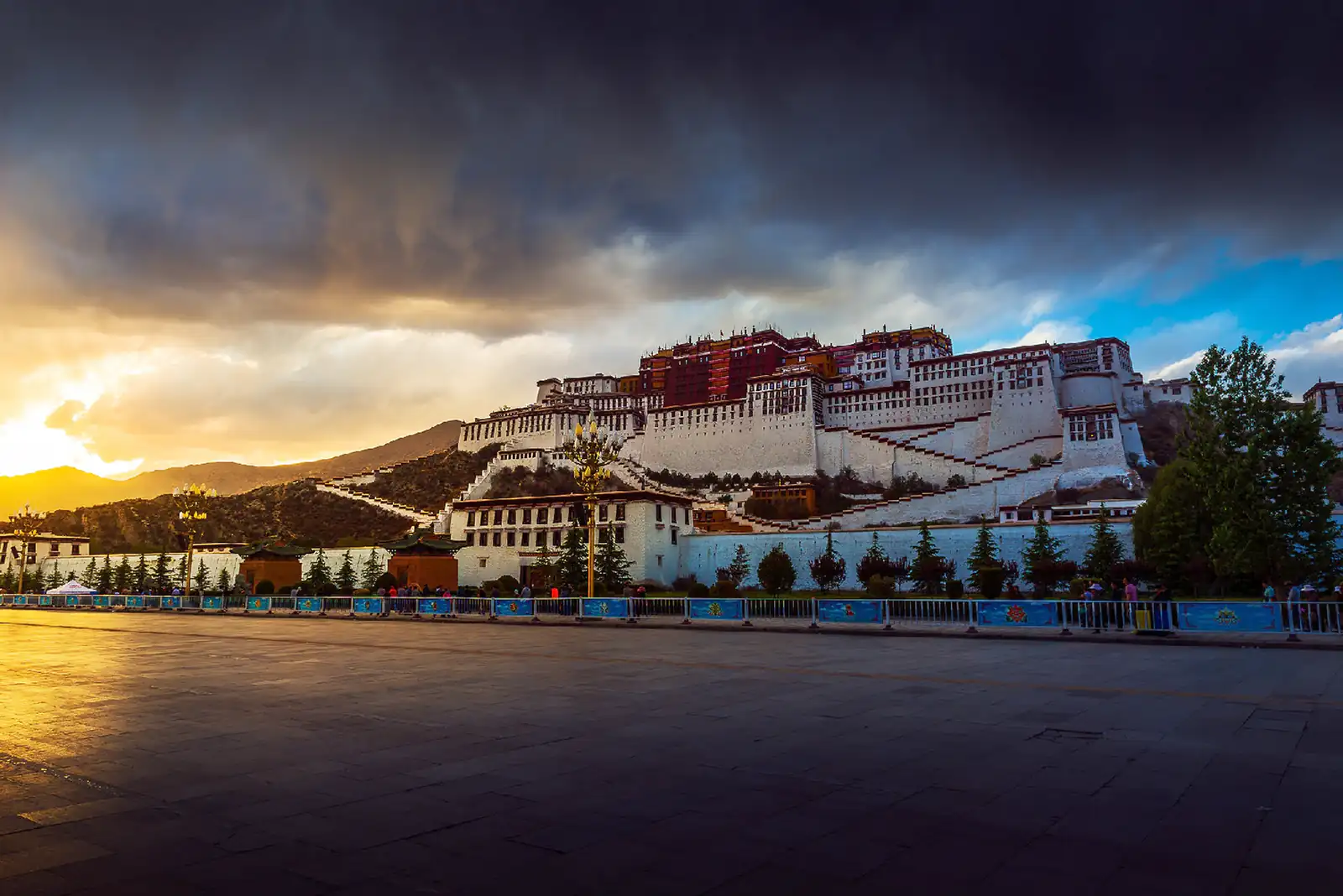
Distinctive Architectural Structure
The Palace’s spectacular architectural style showcases the incredible craftsmanship and talent of the Tibetan people. This Palace’s colossal and breathtaking construction is 13 floors and 115 meters tall. The Potala Palace is the primary hub of the many traditional Tibetan rituals and hosts several events. The Palace has about a thousand rooms, including prayer halls and administrative offices. The materials used for decorations in the buildings include granite, pebbles, and wood.
The Potala Palace also contains additional architectural sections, including the White Palace, Red Palace, and Shol town. Conceivably, the distinctive traditional style of the sculptures, thangkas, paintings, and scriptures portray historical events and Tibetan culture.
It is common to witness native people performing cultural activities around the Palace following their traditional customs. There are unique, vibrant, and magnificent murals in every chamber, the sanctuary, and the stupas. These murals portray Buddhist fables, Tibetan historical tales, and historic Tibetan traditions and ceremonies. More than that, stunning artistic artwork is all around the castle and monastery. Along with the mural and the Thanka, there are additional wood sculptures and an iron Buddha statue at the Palace’s entryway.
The wooden carvings on these stupas look lovely in combination with the diamond ornaments. This castle’s southern walls are decorated in lettering from the Scriptures that were handwritten using various materials and creative techniques such as hammers and needles.
The originality of the work includes a depiction of a historical event in Tibetan and Mongolian art. Additionally, the color and pattern of the windows’ painting complement it very well and adhere to the traditional elements of the Tibetan people.
Shol Garden
Shol Garden is a key attraction that draws your attention as you enter the Palace. The Palace’s foundation is fascinating to investigate since it reveals the fascinating history of the Tibetan people. You will also be able to encounter the locals residing in the nearby local neighborhood.
Along the picturesque tiny settlement, you will also find government offices. The settlements around the Palace represent the historical transformation of Tibet and are a focal location for presenting the country’s historical events, including the preceding conquest phase of Tibet.
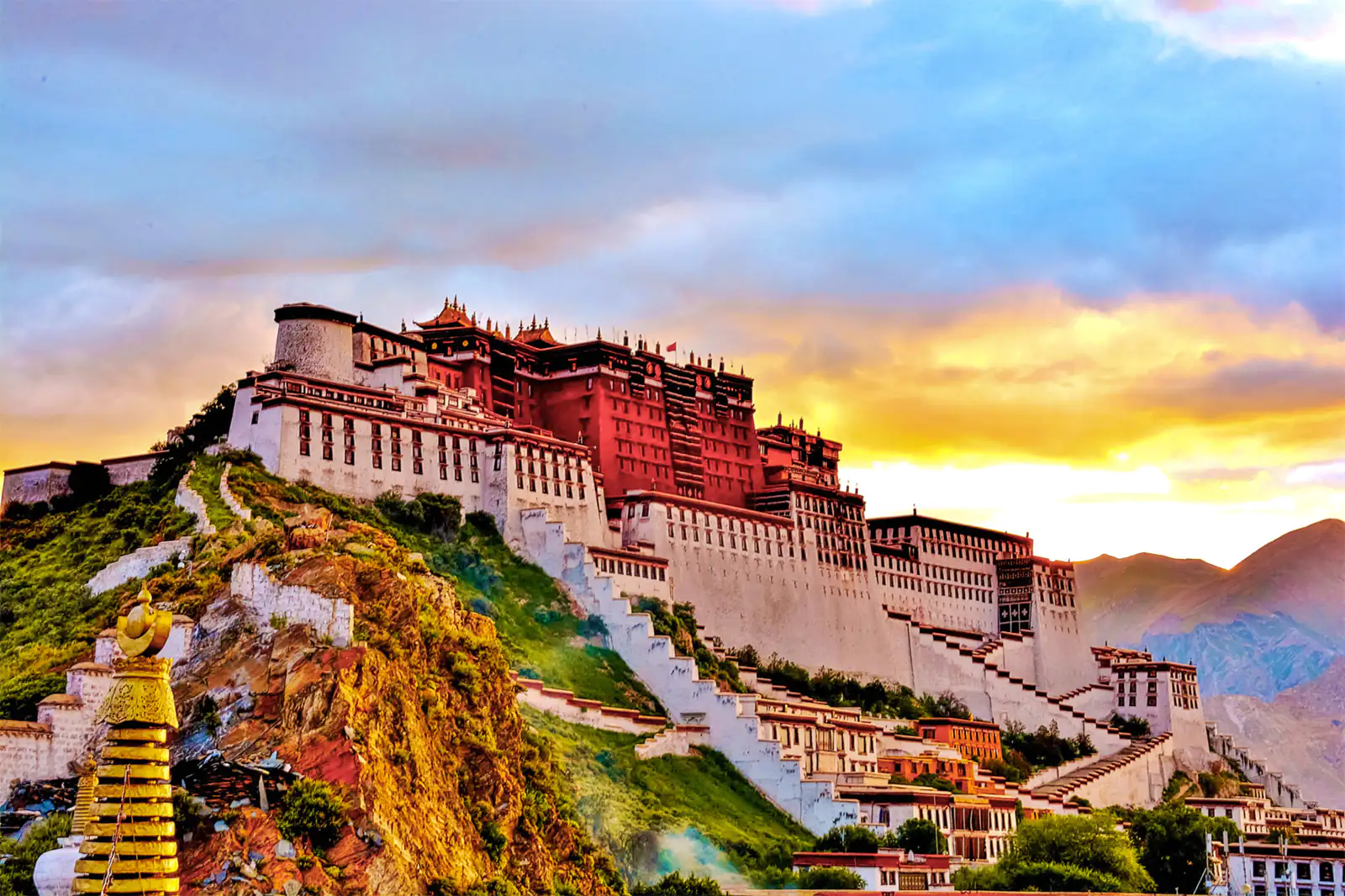
The Red Palace
The impressive fortification is 13 floors tall and one of the tallest in the Palace. This fortress’s architecture, crimson Palace, and vibrant paintings set them apart from neighboring forts. The 6th Tibetan Dalai Lama gave the order to create this magnificent tower. The Buddhists and monks in the region practice meditation while studying the Religion and engaging in other activities inside this structure.
More than that, the red castle also has several miniature sculptures in addition to the whole assortment of artwork and ornamentation. The chapels and galleries show exquisite architectural design in all its precision.
The White Palace
The White Palace is very prominent in the Potala Palace. The Palace is one of the primary administrative sections, and the 5th Dalai Lama lived on one of the floors. The 5th Dalai Lama and his administration moved into the Palace in 1649; later, in the 20th century, the 13th Dalai Lama enhanced the beauty of the Palace. During the 13th Dalai Lama’s leadership, most administrative operations also took place at the White Palace. Although the White Palace’s design is somewhat similar to the Red Palace, they vary significantly.
Beautiful spots to explore in the vicinity of Potala Palace
There are several places to explore within and nearby the Potala Palace. It feels satisfying to blend into the area’s environment, mainly around Potala Palace. The location provides a soothing sensation because of the splendid vista of highlands and Himalayas to the north and the stunning architecture in the neighborhood across the whole castle.
Zongiajho Lukhang Park
The Potala Palace is a short distance from a beautiful park where you can rest for a while. Zongiajho Lukhang Park provides the most spectacular perspectives of the Potala Palace and the picturesque city of Lhasa. From here, you can capture serene shots of the surrounding communities and the Potala Palace. Additionally, you can witness the traditional Tibetan dances and many other things exhibited in this park during the PaldenLamo festival in November.
Monasteries
There will be monasteries surrounding the Potala Palace. These monasteries’ architecture serves as a reminder of the incredible craftsmanship of the Tibetan people. Besides that, monks from other places gather at these monasteries to meditate and worship their deities, such as Lord Buddha. Pabhluk Monastery is one of the most well-known and stands out among the other monasteries, being set above the hills where it provides a stunning view of the magnificent Palace and its surroundings. More than that, the presence of Buddha statues and Sakhyamuni contributes to the monastery’s incredible mystical atmosphere. Along with that, the natural attraction of this monastery is its stunning sculptures and wooden windows.
Hill station of Chakpori
Chakpori is a must-see for everyone visiting the Potala Palace. There is flora around the Potala Palace to the south. From the Chakpori hill, one may enjoy a stunning view of Lhasa and the breathtaking scenery to the north. People frequently visit this location to take in the beautiful dawn and sunset views, and the early sun immediately illuminates the Palace and monasteries visible from here. Chakpori Hills is also ideal for resting and recuperating while exploring Lhasa.
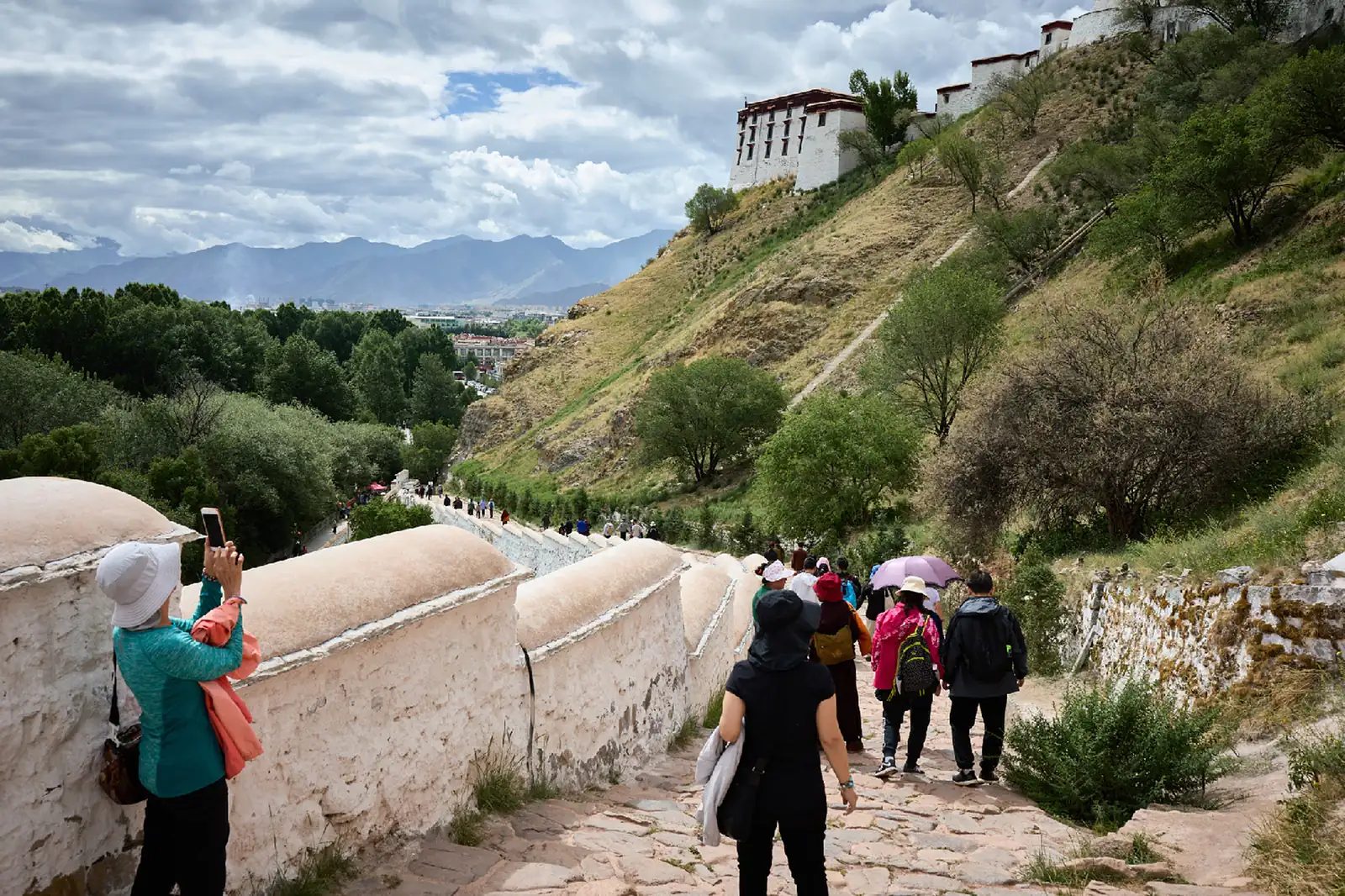
Ticket and transportation to Potala Palace
There are several modes of transportation available to get to the Potala Palace. For foreign travelers, airplane service is always available; you can easily take a flight straight to the Lhasa Gonggar Airport, and from there, you can find a taxi service to the Potala Palace. A train service also runs from the Chinese mainland to Lhasa. You will also require a ticket to enter the Potala Palace site. Alternatively, the tour company will take care of it if you visit the Palace with them. The ticket price will be higher during peak season, which runs from April to November. Typically, a ticket for one person ranges from USD 15 to 30 depending on the season. The Palace is open from early morning until late afternoon, depending on conditions. The Potala Palace is easily reachable by road or air.
Best time to Visit
The Potala Palace is accessible to the public all year. However, the best time to visit this ancient Palace to have a spectacular experience is in April and November. There will always be a sizable crowd in the vicinity of Potala Palace. It is an excellent time to visit if you enjoy crowds, the hustle and bustle, and the diversity of ceremonies. You may also visit in early July when there will be a marvelous panorama of the surrounding environment and outstanding traditional Tibetan activities. You can also travel during the off-season, before July, if you desire a peaceful tour with fewer crowds.
